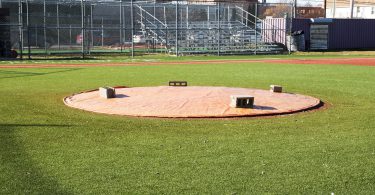Research tells us that 85% of NCAA baseball players played both high school and some sort of club baseball. With the cost of club baseball rising astronomically (a recent article on Stack ranked baseball as the 2nd most expensive youth sport), how do you make it to college baseball if you don’t have the money to play club baseball? Or what if you don’t have the resources to attend a showcase or visit a school? The answer lies in knowledge, planning, and cost-effective alternatives. While money certainly makes the recruiting process easier, by no means is having money a necessity for playing college baseball. In this article, we assume that you have $0 to spend on the recruiting process and lay out a game plan to get you started with free alternatives to replace expensive steps in the recruiting process.
A 3 Step Game Plan:
- Get Informed: Knowledge is power. It’s also free. The beautiful thing about the technology age is that there are free ways to find out everything you need to know about college baseball, the recruiting process, and player development if you have the curiosity and persistence to research and learn. In fact, that’s the whole reason KPB exists! We believe with the right information and a solid work ethic, you can make it to the next level on even the tightest budget. We’ve assembled this website to provide you with all the information you need to navigate the college baseball recruiting process. When you know what it takes to play college baseball, your path to get there becomes much more clear and your effort and persistence become the deciding factor.
- Take note of the resources you DO have: When you don’t have money to spend, all the other resources you do have become even more important! Take stock of who you have to help you (coaches, family members, friends, school administrators, etc.), baseball resources available to you (fields nearby, access to cages, backyard space, access to a gym, weights, etc.), and technology available to you (smart phone, internet connection, computer, etc.).
- Be resourceful, lean on your resources, and put together a plan: Once you realize that you have more going in your favor than you think, it’s a matter of being resourceful and making the most of the resources available to you. Your local park becomes a place to swing the bat, take grounders and catch fly balls with a teammate. Your dad’s rusted dumbbells become your gym equipment. The brick wall down the street becomes your place to work on glove skill and throwing accuracy. Your local or school library become a place you can access the internet, do research, and learn.
Now, let’s look at some concrete ways to replace some of the expensive parts of the recruiting process.
Alternatives to attending a showcase:
The good news is that showcases are not a necessity for playing at the next level, that’s just what people want you to believe so you pay them money to attend. Showcases can be a helpful tool, but few players are recruited based solely on their performance at a showcase. The showcase simply gets college coaches interested in following up and seeing players more. A skills video can serve the same purpose and you can make it and send it out to coaches yourself for free. In fact, we offer a free online course that will walk you through the process of creating a successful DIY recruiting video from start to finish, and teach you how to use it to get recruited. You can take the course for free HERE.
However, before giving up on a showcase you have researched and really want to attend, reach out to the organizers and see if they offer scholarships or are willing to work with you to make it affordable. If you do that and it doesn’t work out, here’s what to do instead. Tap into your resources to get access to a smartphone and use it to create an updated skills video. If you can’t do that on your own, use Flatground App or Flatground Hitters’ network of facilities to see if someone can help you create one (there are tons of people all over who want to help!). Here’s what to include in the video if you are a pitcher. Here’s what to include if you are a position player. If you need more help on creating the video, this article has some additional tips but our best resources is our FREE online course. Just click the link to enroll. Remember that the timing of when you send the video out is as important as writing a quality introductory email so that the video will get watched. Here’s more on why you need to seek exposure and evaluation at the right time. Once you’ve determined the time is right, leverage social media, email campaigns, and networks like Flatground App to get your video in front of college coaches.
Alternatives to Playing Travel Ball:
If you don’t have access to a quality travel ball team or can’t afford to play for one, coming up with a training plan is essential. More and more players are giving up summer and fall ball to train and develop the skills that make you a can’t-miss recruit. So, if you use the off-season wisely, you won’t actually be falling behind at all. By reaching out to strength coaches, and doing some research, you can put together a great strength and conditioning plan. We suggest starting with guys like Zach Dechant of TCU, Ryan Faer of the Indians organization, or Driveline Baseball. All of these resources offer a lot of free help and integrate baseball strength and conditioning into overall skill development. You will also want to use the resources available to you to continue your baseball training and skill development (hitting in the cage, throwing, taking ground balls, playing wall ball and more). Before you start any training plan, be sure to check it out carefully with your coaches, parents, and if possible, a training professional to make sure it is safe and best for your goals.
Alternatives to Campus Visits:
Visiting a school is a great way to get a complete understanding of the program. If you get interest from a non-local school and don’t have the money to make a visit, you have two viable options. Wait until schools can offer an official visit (September 1 of junior year) and see if they will help pay for the costs to visit, or use technology to fill the gaps. As weird as it sounds, getting access to a smart phone will save the day. Have the coach give you a virtual tour of campus with his phone using periscope, FaceTime, or some other live streaming method of getting videos of campus. That will give you the opportunity to see the campus, baseball facilities, and ask questions in real time. School websites are another option. Most schools now have interactive campus maps, videos, webcams, or virtual tours. This makes it easier to feel like you are at the school when you are not, and can give you a ton of information. While there is no substitute to being on campus and getting a feeling for whether you like it or not, the alternatives are free and have improved greatly.
Lack of Consistent Coaching:
If you are at a school where there is a lot of coaching turnover or you don’t have access to coaching help on a regular basis, again, the internet can be your best friend. Engage, engage, engage. Many college coaches are as accessible as recruiting rules allow them to be online and there are plenty of coaches in the private sector who are generous with answering questions when players are courageous enough to ask and seek help. Be relentless in your pursuit for help and don’t be worried about getting turned away. Technology has made it easier for recruits without money to spend on recruitment to get access to college coaches and create the exposure and relationships they need to keep playing at the next level. For more on how to use technology to your advantage, read here.







